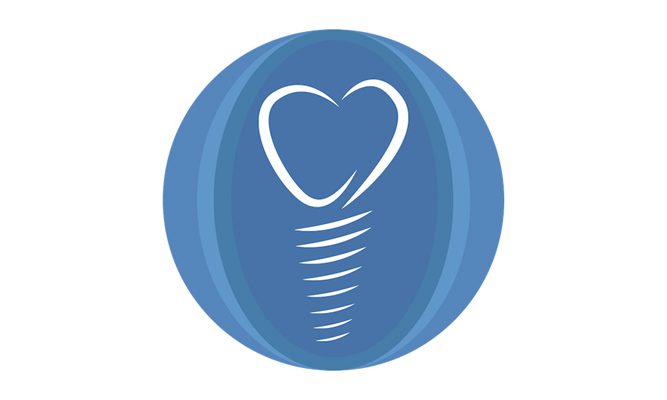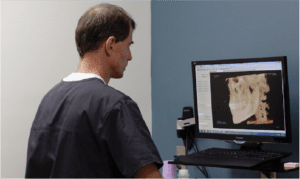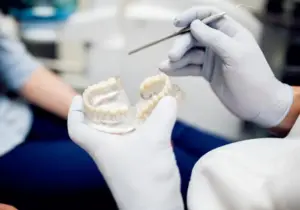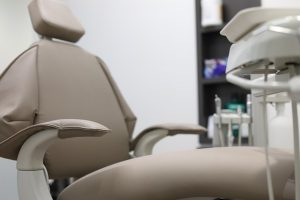While mouth cancer isn’t as common as many other types of cancer, it’s still a serious public health concern; more than 410,000 people in the U.S. are living with the condition. While it can be treated successfully, it is often not detected until late in its development.
Oral cancer occurs in men twice as often as women, usually after age 50. The biggest causes are tobacco use, alcohol use, poor diet, human papillomavirus (HPV), and UV exposure. The statistics on oral cancer in the US are actually kind of scary:
- 54,000 people will be diagnosed with an oral cancer this year.
- Over 9,750 people die of oral cancers each year.
- The 5-year survival rate for oral cancers is 57%.
- 75% of people over 50 diagnosed with oral cancer consume tobacco.
Types of Oral Cancer & Contributing Factors
The two types of oral cancer are related, but there are important distinctions between them:
- Oral cavity cancer affects the inside of the lips and lining of the cheeks, gums roof of the mouth and the visible part of the tongue. Surgery is the primary treatment, potentially followed by radiation or radiation and chemotherapy combined. Tobacco use is the most common cause. Heavy drinking also increases risk.
- Oropharyngeal cancer impacts the back part of the roof of the mouth, the base of the tongue, and/or the throat. Chemo and radiation are standard treatments, followed by surgery if needed. In 70% of cases, this cancer is caused by HPV, which is transmitted through oral sex. That’s one reason public health professionals strongly recommend young people get the HPV vaccine starting at age 11, before sexual activity. The remaining 30% of oropharyngeal cancers are caused by tobacco and alcohol.
Signs & Symptoms of Oral Cancer
What’s most dangerous about oral cancers is that it’s difficult to detect them in the early stages. They often don’t cause any pain at first – just little physical changes. Pay attention to your body; call your dental specialist if you have suspicions; and don’t skip those yearly dental scans.
These symptoms can indicate oral cancer and should be addressed if it lingers:
- Mouth sores that don’t heal
- Red, irritated patches
- Unexplained mouth pain
- Mouth bleeding
- Numbness in the mouth and/or face
- A lump or mass in the in the neck that may or may not hurt
- Change in color of the inner lining of your mouth
- Loose teeth without a clear dental cause
- Sore throat, hoarseness or other voice changes
- Trouble chewing and/or swallowing
Signs of oral cancer are often picked up during routine doctor or dentist checkups. Health professionals often notice and document changes that can signal a premalignant lesion that needs to be reviewed more thoroughly.
In order to diagnose oral cancer, a physician or dentist will start with a physical exam. If signs of possible cancer are found, the patient will get a thorough mouth inspection. The practitioner will be looking for lumps on the lips, gums, cheeks and neck. A medical history will be taken.
The clinician will then examine the voice box and neck lymph nodes. An endoscopy may be needed, along with imaging tests. A biopsy is usually done to make a definitive cancer diagnosis. Biopsies are very small and often painless, making them a useful and efficient tool for oral cancer detection in the early stages.
Treatment Interventions for Oral Cancers
Depending on the stage of the cancer, traditional cancer treatment methods will be utilized, but they may be applied locally (radiation) instead of intravenously (chemotherapy) if the cancer is caught early.
Surgery to Remove the Cancerous Lesion(s)
If a tumor is found, it is removed through surgery. Robotic surgery and laser microsurgery can remove tumors precisely and with only small incisions.
Chemotherapy to Kill Cancer Cells
Chemotherapy may also be part of the treatment, though it’s not used as a standalone therapy in cases of oral cancers.
Radiation to Retard Cell Proliferation
Radiation is used on its own or in combination with chemotherapy, before or after surgery. When used before surgery, it can shrink the lesion/tumor. After surgery, it can wipe out any microscopic parts not reachable during surgery.
In addition, any teeth that may pose a risk will be extracted, and associated oral conditions like periodontitis will be treated in-tandem with the oral cancer. A maxillofacial surgeon will perform a facial reconstruction for patients who’ve undergone significant physical changes due to the oral cancer.
Rehabilitation to Restore Quality of Life
Rehab is an important part of oral cancer treatment. It may begin in the hospital and continue on an outpatient basis. Pain and swallowing problems can occur. A feeding tube may be temporarily needed.
- Prostheses might be made to supplement large areas of bone loss/removal.
- Oral cancer treatments can affect appetite and taste, cause dry mouth, and impair the ability to chew and swallow. Nutritionists help patients choose appropriate foods.
- Emotional effects are common; when people can’t speak well or eat in front of others, they can feel isolated.
- Occupational therapy may be used to retrain the mouth/jaw on how to move and function properly.
Only fifty-seven percent of people diagnosed with oral cancer live at least five years post-diagnosis. The best treatment, as with all disease, is prevention, followed by early detection. So remember: listen to your body, take care of it, visit your dental specialist regularly, and if you feel something’s off, give us a call. When it comes to oral cancer, you’re better off safe than sorry.










